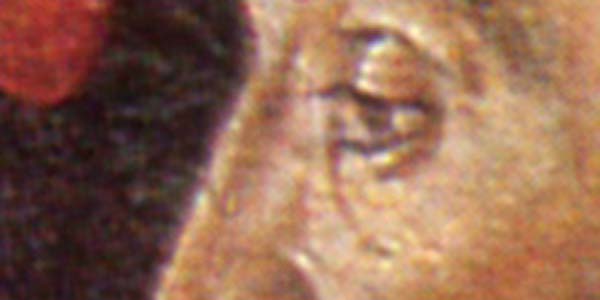When I think of Ciriaco Pizzecolli I think of the man with a thousand faces. Who was he really? A merchant, a traveler, an antiques dealer, a historian, a spy?
A thousand light bulbs light up in me and my mind begins to travel, just like he did, because Ciriaco really was first and foremost a traveler. It is no coincidence that his tutelary deity was the god Hermes / Mercury, to whom he dedicated morning prayers and wrote hymns, undertaking his journeys only starting on Wednesdays, the day sacred to him.
Hermes as you know is the god of movement, of business, of everything that moves and trades but not only that. He is the God who adapts, with his winged shoes he escapes any compromising situation, he flies away quickly to introduce himself into another adventure based on trade and exchange. He must also be a god who loves ports, in my opinion.
Ciriaco was born into an Ancona family of noble origins, his father died at an early age and he was raised by his grandfather who taught him the techniques of trade. For a quick mind like his it must have taken little, sometimes it's enough to follow the speeches of the greats, to be immersed in the goods that leave and arrive and the people that you see today and are already back at sea tomorrow. Ciriaco, however, also loves history, everything that is ancient, perhaps he would like to do something else but his parents tell him that is not what he has to do, he must follow the family tradition.
Yes, that's fine, but in the meantime he has been scrutinizing Trajan's arch since he was a child, climbing among the stones and reading the epigraphs up close, touching the material that perhaps came from afar, dreaming of unknown worlds and traveling through time. He longs for men, commands, chariots and horses. Trajan reached Persia, as Cyriacus will do one day, he will go to Egypt and Byzantium and then search all of Greece, because Greece has something that arouses something in him that he does not understand but feels.
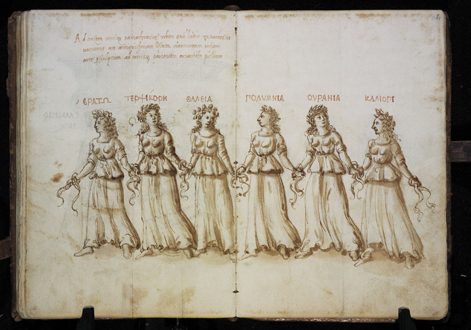 Born in an era of full transformation, Ciriaco felt the need to turn to the past since he was a child, passionate about history and archeology and also a Renaissance man, he began to travel on behalf of Ancona and Venetian companies in Egypt, Greece and Asia Minor and allows himself to be immersed in the ruins of the Greek temples (In Delos, for example, an epigraph at the entrance to this surprising island recalls him almost with devotion) and begins to study their history and language. He draws the archaeological sites, the monuments reduced to ruins which are for Ciriaco, historarium seal, for him they are worth more than a thousand stories...
Born in an era of full transformation, Ciriaco felt the need to turn to the past since he was a child, passionate about history and archeology and also a Renaissance man, he began to travel on behalf of Ancona and Venetian companies in Egypt, Greece and Asia Minor and allows himself to be immersed in the ruins of the Greek temples (In Delos, for example, an epigraph at the entrance to this surprising island recalls him almost with devotion) and begins to study their history and language. He draws the archaeological sites, the monuments reduced to ruins which are for Ciriaco, historarium seal, for him they are worth more than a thousand stories...
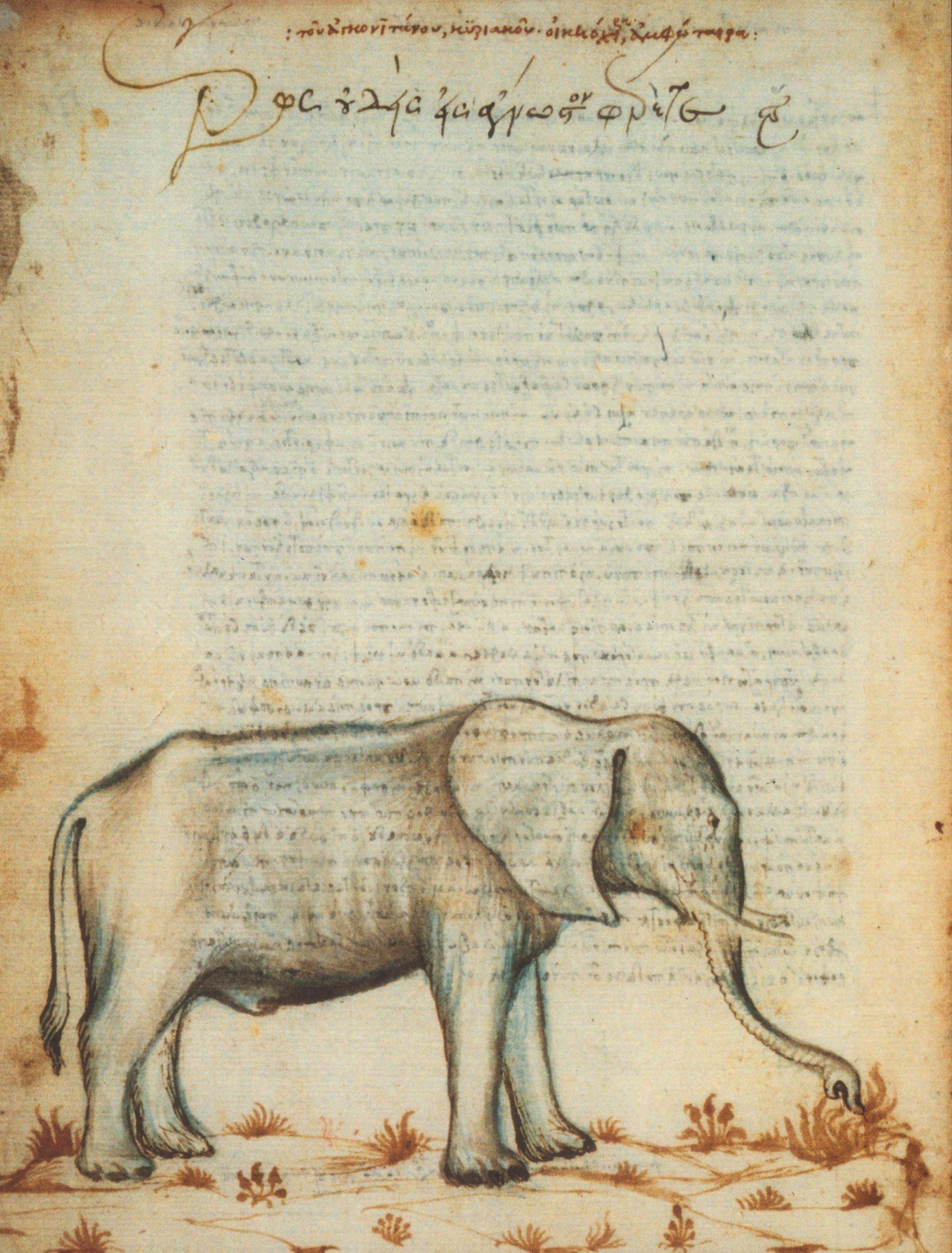 (The elephant is the symbol of a particular reality that the Hindus call Brahman, and Meister Eckhart, one of the great mystics of the West, calls "divinity". Among other things, it is the symbol of the Malatesta family. Pandolfo will take the bones of Gemisto da Mistrà and will have them placed in the Malatesta Temple in Rimini. Another curiosity: Antoine de Saint Exupery in his "Little Prince" inserts the elephant inside the boa constrictor that everyone mistakes for a hat. The elephant is God, for the mystics. )
(The elephant is the symbol of a particular reality that the Hindus call Brahman, and Meister Eckhart, one of the great mystics of the West, calls "divinity". Among other things, it is the symbol of the Malatesta family. Pandolfo will take the bones of Gemisto da Mistrà and will have them placed in the Malatesta Temple in Rimini. Another curiosity: Antoine de Saint Exupery in his "Little Prince" inserts the elephant inside the boa constrictor that everyone mistakes for a hat. The elephant is God, for the mystics. )
Reading the story of Ciriaco Pizzecolli means entering an unknown and exciting universe, and takes us back to a past that represented a second rebirth for Italy, after the glories of Rome, or the opportunity to be remembered and admired in the world.
Ciriaco was one of the most interesting and influential protagonists in the start of an unstoppable process that involved politicians, theologians, merchants, princes and emperors and still attracts for the offer of symbols and emblems that represent our archetypal, cultural and psychic fabric.
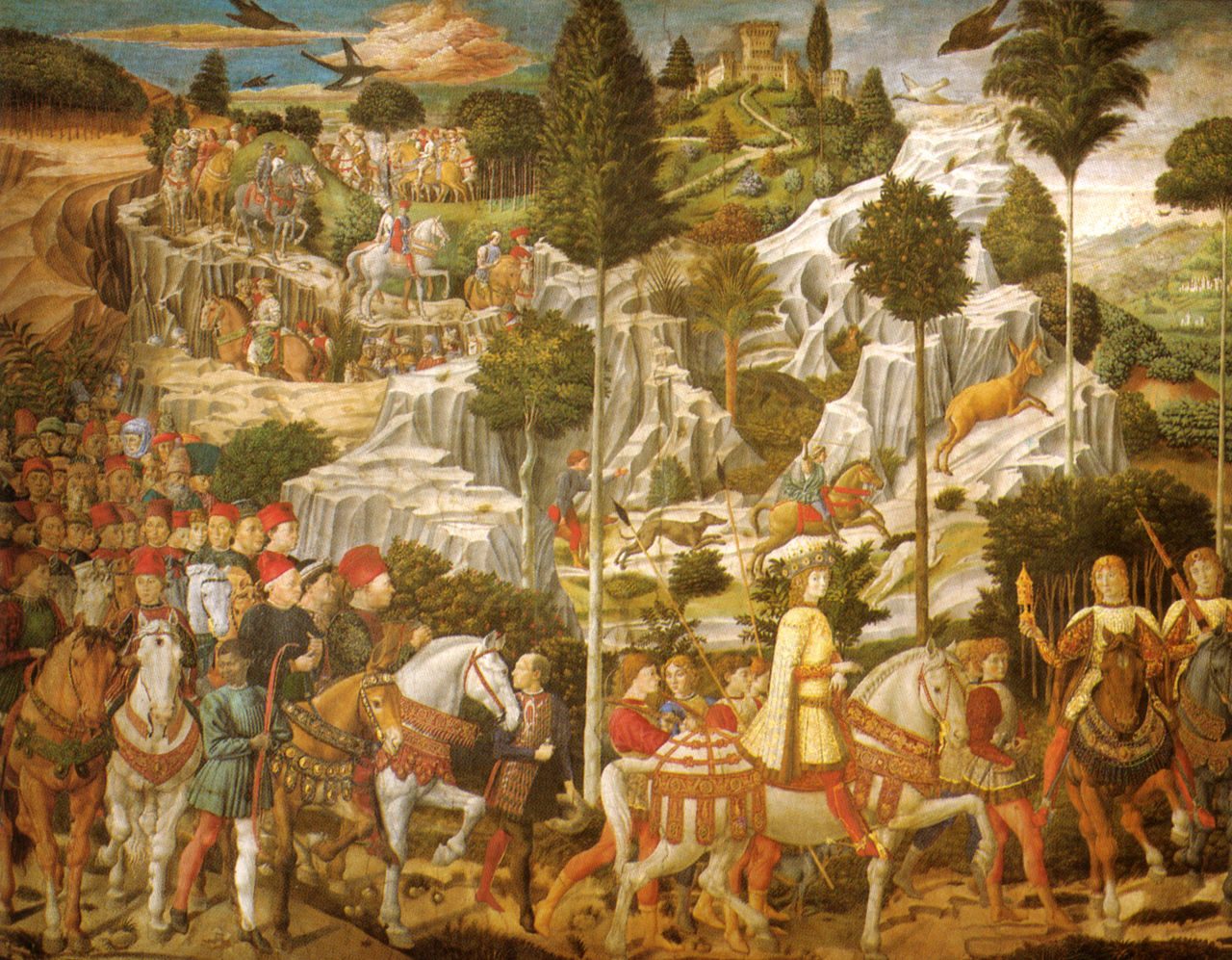
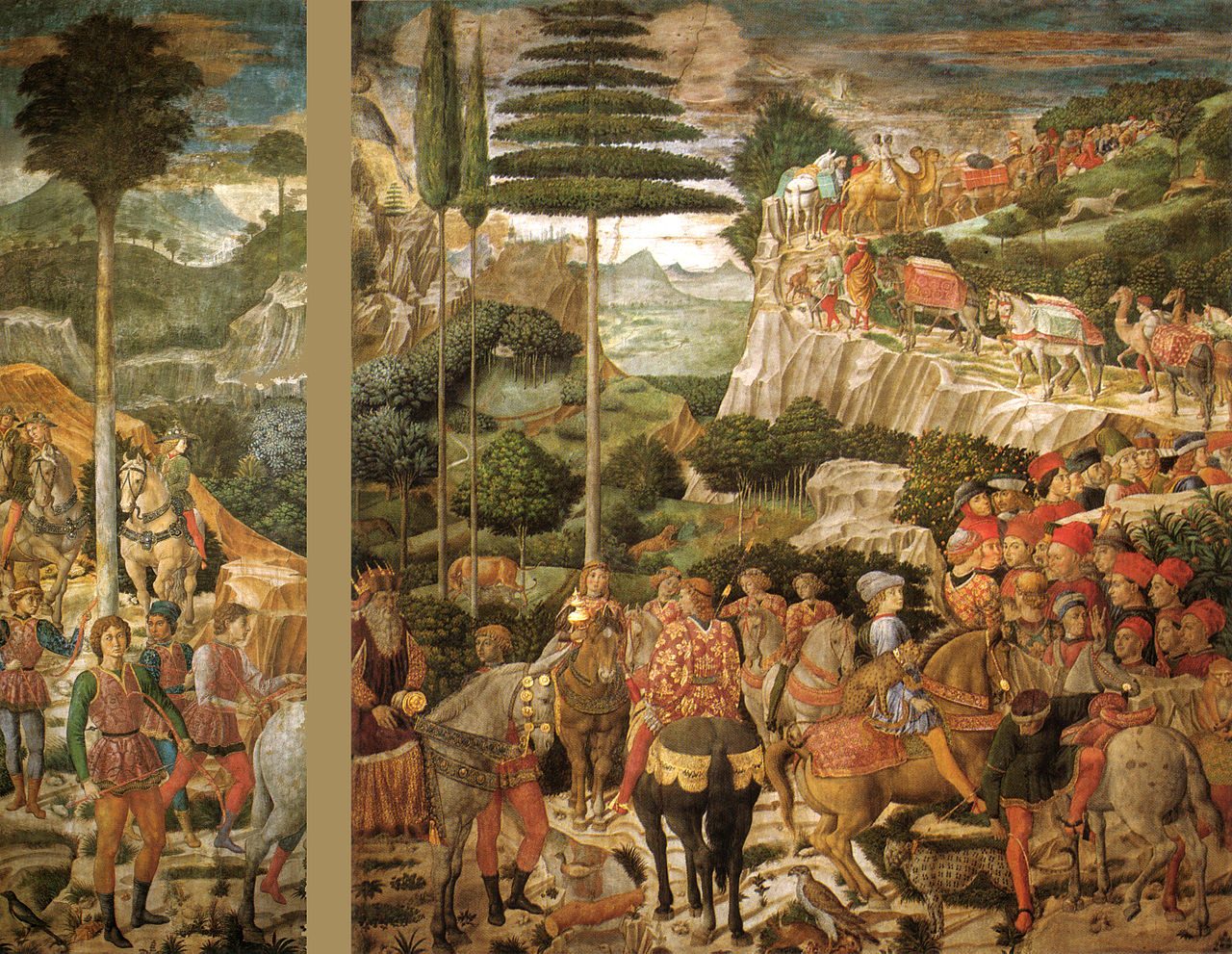
In the photo: Ciriaco is portrayed together with the greats of the time, in the fresco by Benozzo Gozzoli in Florence, Palazzo Medici Riccardi. The fresco "tells" the procession, which actually existed, of the Byzantine imperial court present in Ferrara and Florence in 1438. With Ciriaco we see Marsilio Ficino, Lorenzo de Medici, Galeazzo Maria Sforza, Luigi Pulci, the most magical of all: Gemisto Pletho, Isidore of Kiev, Pius II (the one who died in Ancona), the omnipresent and famous Cardinal Bessarion, Filarete.
I believe that Ciriaco d'Ancona, in essence, deserves much more consideration than it has nowadays.

